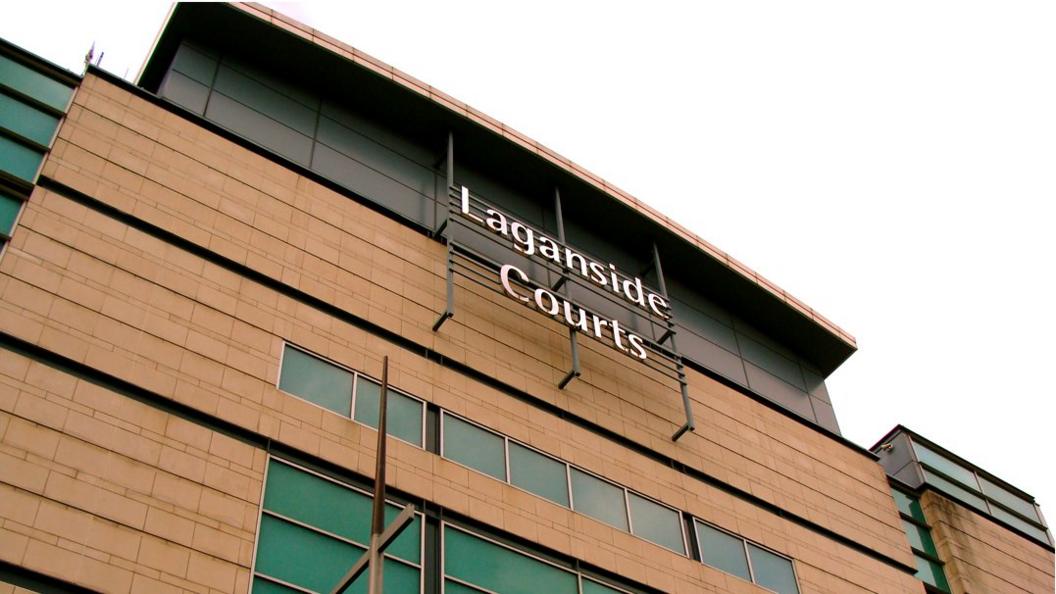National identity still a source of deep division in Northern Ireland
- Published
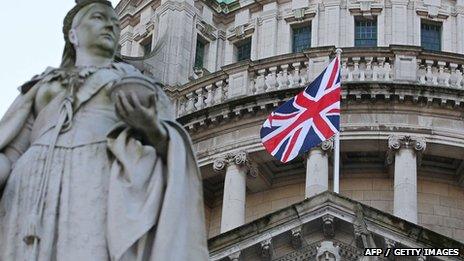
The union flag used to be flown at Belfast City Hall on every day of the year, prior to a council vote on 3 December 2012
Belfast's reputation is being dragged through the gutter and Northern Ireland is an object of derision around the world.
That is the opinion of one councillor from the cross community Alliance party, Maire Hendron, speaking during Belfast City Council's meeting on Monday night.
Seen from afar, riots over which flag flutters above a council building may appear inexplicable, but national identity remains a source of deep division in Northern Ireland.
Disputes about flags and symbols have been a regular occurrence over the decades.
The Good Friday Agreement settled the dispute between London and Dublin about sovereignty, with both governments and the major political parties recognising the "principle of consent", namely that it's up to the will of the majority voting in a referendum whether Northern Ireland remains in the UK or becomes part of Ireland.
But in working class areas of Belfast, Protestants and Catholics still live apart, sheltered behind peace walls, in areas often festooned with different national flags and contrasting murals.
Hurt
There's no sign of Belfast City Council overturning its decision to fly the flag just on designated days. Sinn Fein's Council leader Jim McVeigh said the loyalists protests were pointless as the council will not perform a U-turn.
Unionists continue to complain about the hurt caused to their community.
But the Alliance party, which controls the balance of power on Belfast council, said the designated days option was in line with the recommendation from Northern Ireland's Equality Commission as an approach that would promote good relations between both sides.
One proposal suggested by the Democratic Unionist Party (DUP) last month was to fly the union flag over the cenotaph which stands in the grounds of Belfast City Hall.
The idea was taken from a compromise reached at neighbouring Lisburn council.
Alliance have indicated they are open to the suggestion, which has now been handed over to a council committee.
Any progress on this proposal is unlikely to be immediate, as it would be subjected to what is known as an "equality impact assessment", which could take several weeks.
Others, such as the Northern Ireland Conservative Party, have expressed concern that putting a union flag 356 days a year on the Belfast war memorial could "diminish the flag and debase and politicise a place of remembrance".
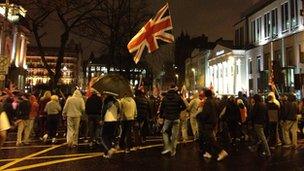
Loyalist protesters gathered at the City Hall as councillors met inside
Alienation
The DUP and Ulster Unionist leaders, Peter Robinson and Mike Nesbitt, are setting up a "unionist forum" to try to channel the protesters' frustration into conventional political activity.
This forum will certainly discuss issues such as deprivation and educational underachievement, which contribute to the sense of alienation felt in some loyalist communities.
But it doesn't have the power to order the flag back up the council flagpole.
Moreover the unionist leaders find themselves under pressure from different quarters.
The other Stormont parties argue that only a cross community approach will produce dividends, while some loyalist protest leaders have called for an end to the entire Stormont settlement, demanding Peter Robinson's resignation as first minister in order to trigger a return to direct rule from London.
Review
With no sign of any change at Belfast Council, unionists have taken the flag dispute elsewhere - securing a review of the limited flag flying at another council in Craigavon.
Last month unionists attempted to push through a similar review extending the number of days the union flag is flown over Stormont's parliament building.
But the plan was blocked by nationalists and Alliance who boycotted a meeting to discuss the proposal.

Down District Council flies its own flag
Last spring, when the union flag wasn't quite such a hot topic, Sinn Fein brought a different idea to the commission that runs the Stormont Assembly.
Earlier this year, a Belfast newspaper reported, external Sinn Fein's proposal for the Irish tricolour to be flown alongside the union flag.
However the proposal didn't generate the necessary support.
Republicans might favour a similar approach at Belfast City Hall, but far from improving the situation it would probably only exacerbate tensions.
Other Northern Ireland councils, such as Down district, fly their own flags - an approach which - if copied by Belfast - would guarantee neutrality but is unlikely to satisfy loyalist protestors.
Inside Belfast City Hall you can still see a large antique union flag amongst the memorabilia on display.
Outside the council building sports not one, but five flagpoles.
If some flag expert, or in more technical language a vexillologist, came up with an assortment of flags that could keep everyone happy, surely the city's hard pressed Chamber of Commerce would offer them at least one day's free shopping.
- Published8 January 2013

- Published8 January 2013
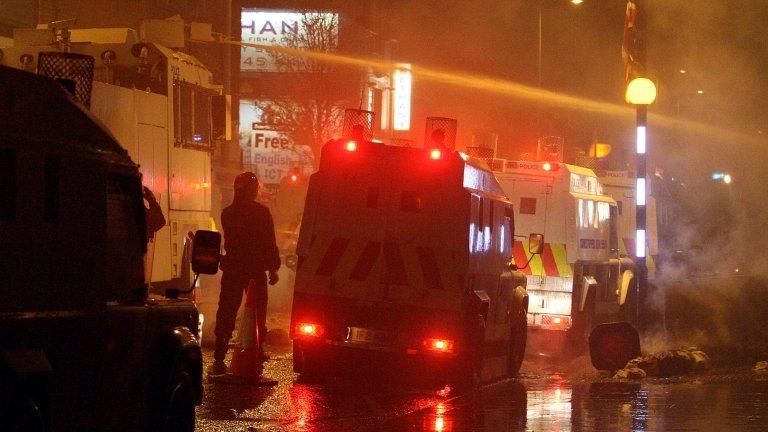
- Published7 January 2013
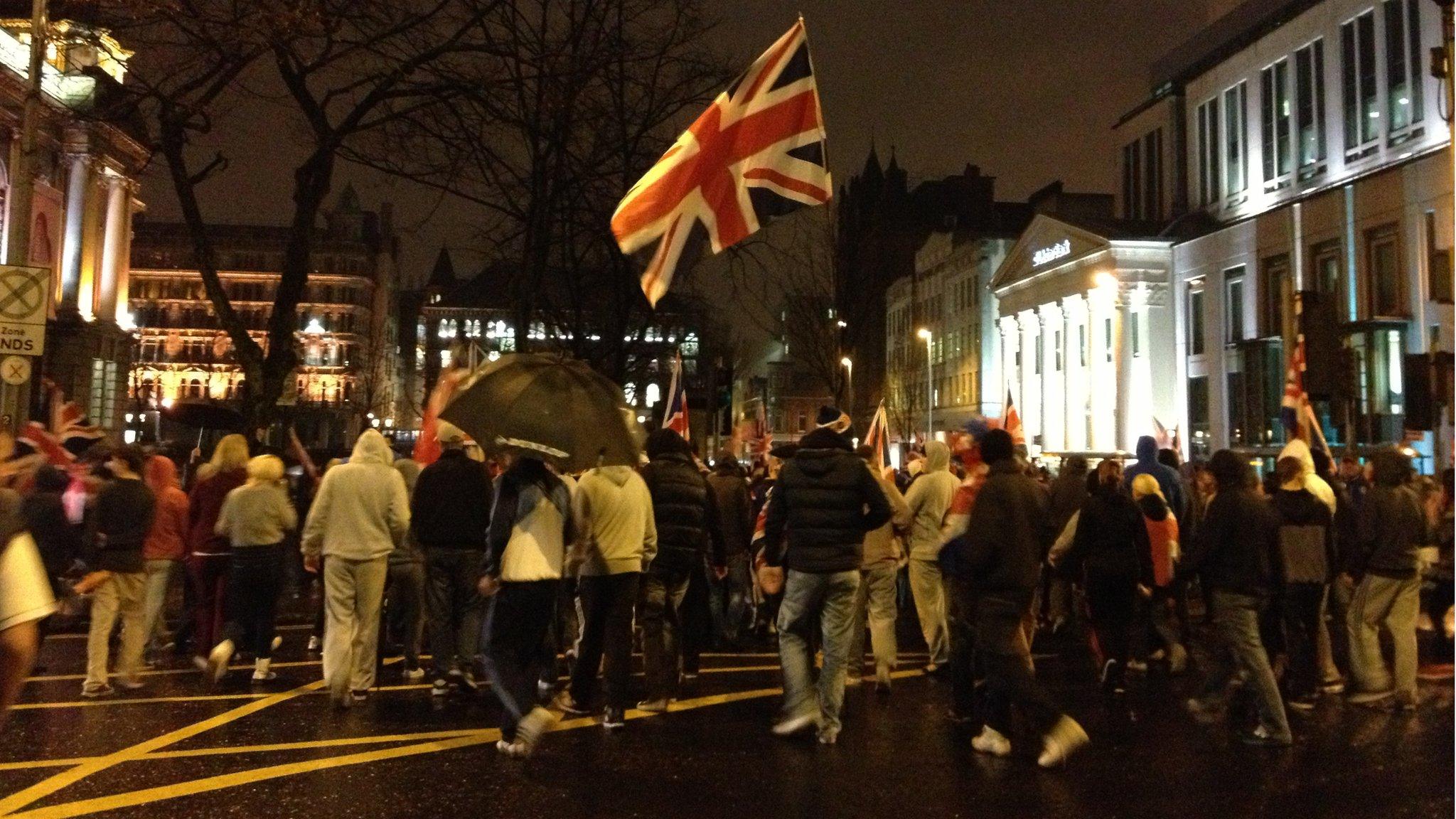
- Published7 January 2013
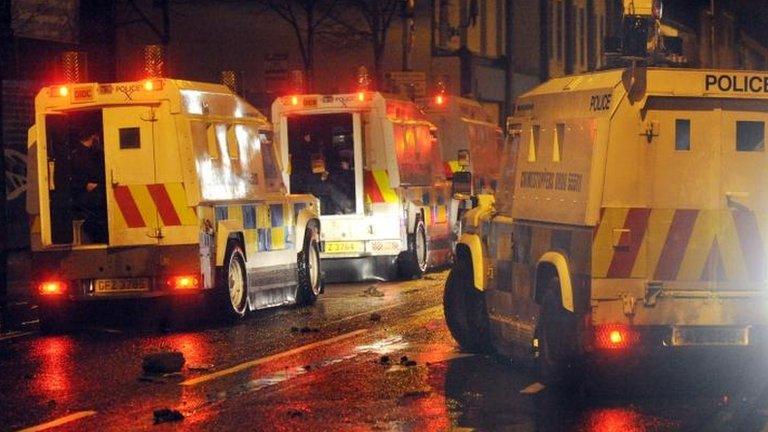
- Published8 January 2013
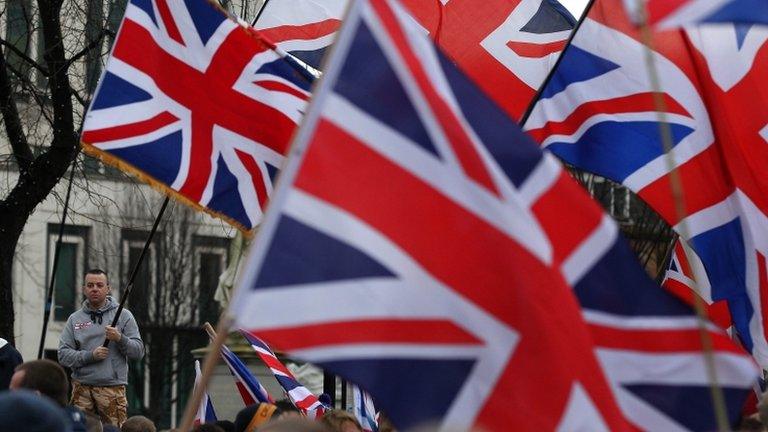
- Published7 January 2013
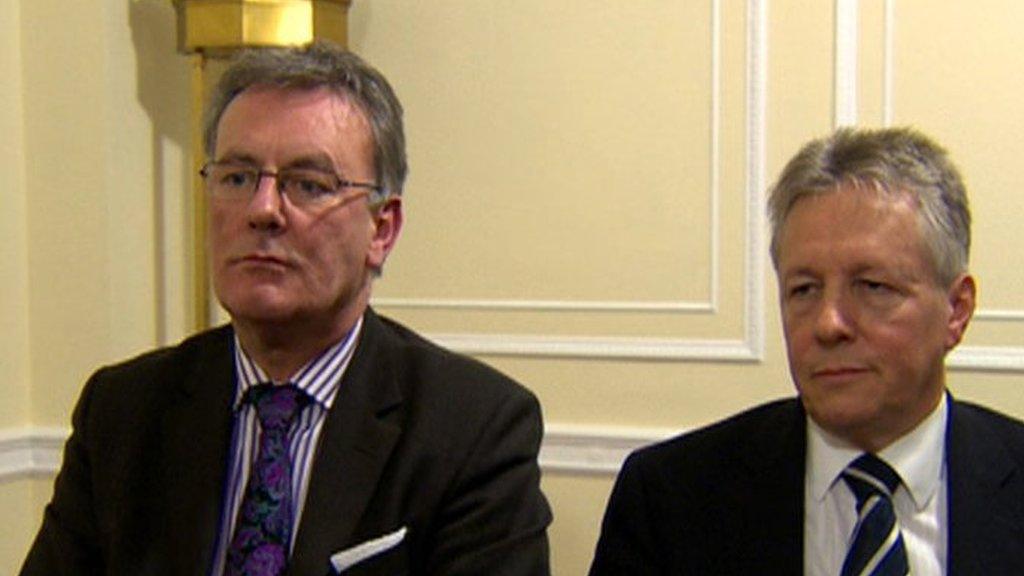
- Published28 November 2014

- Published6 January 2013
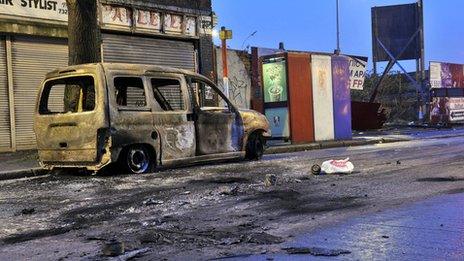
- Published7 January 2013
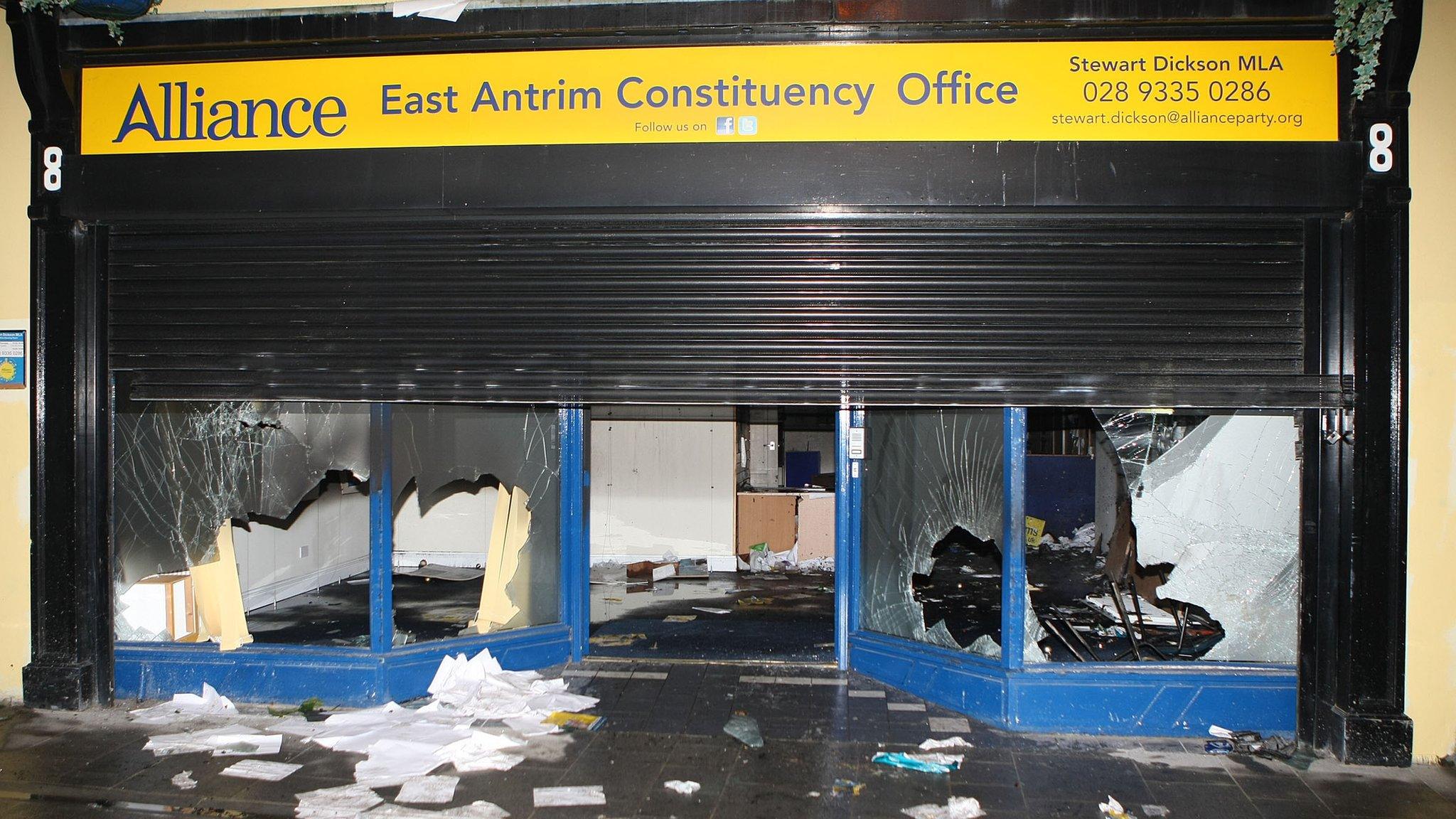
- Published5 January 2013
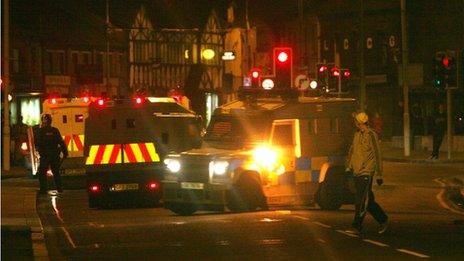
- Published4 January 2013
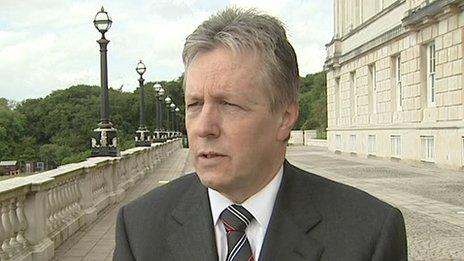
- Published3 December 2012
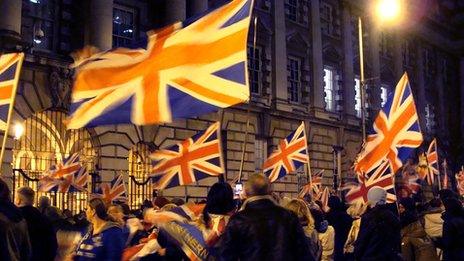
- Published4 January 2013

- Published4 January 2013
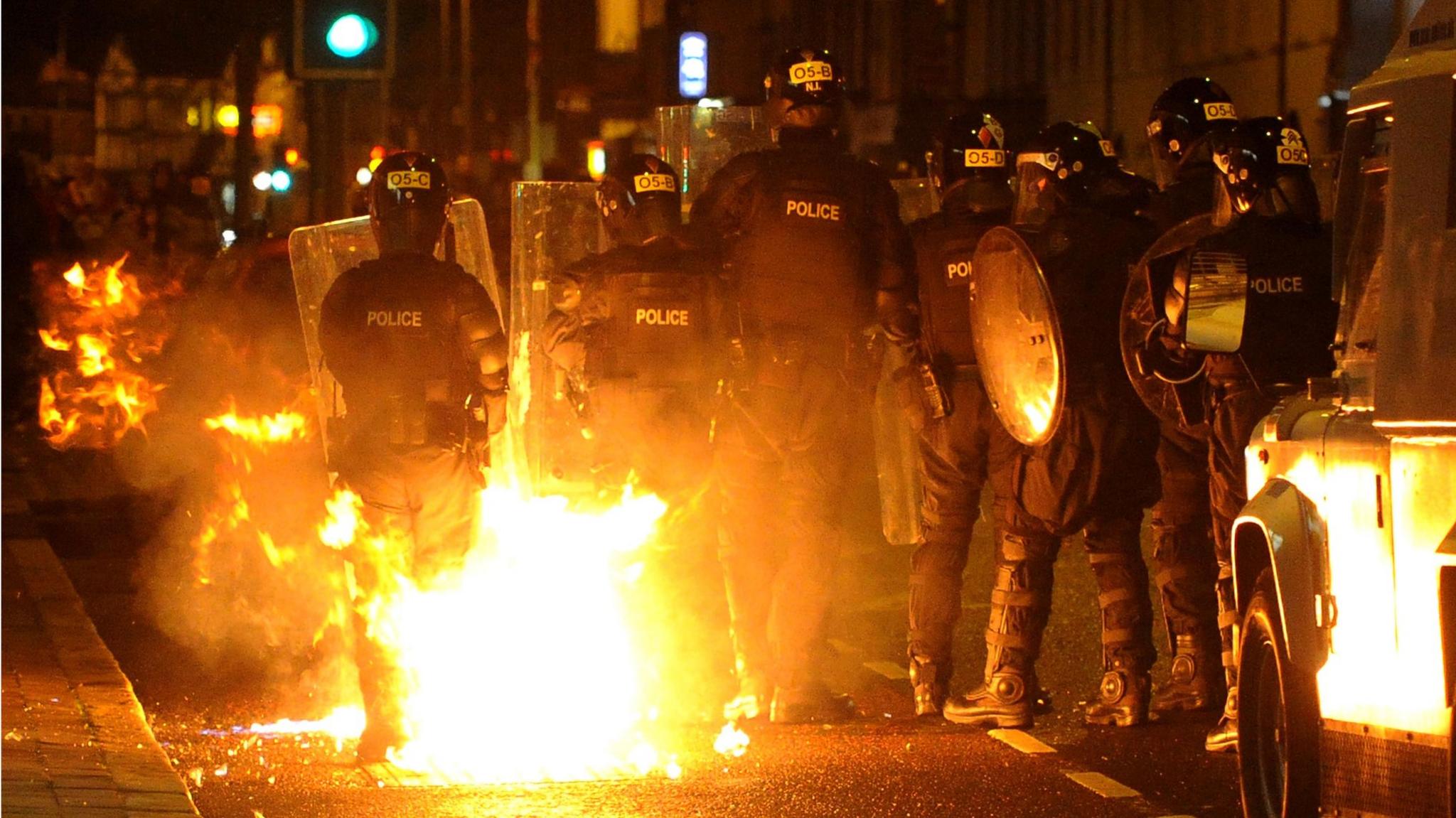
- Published4 January 2013
